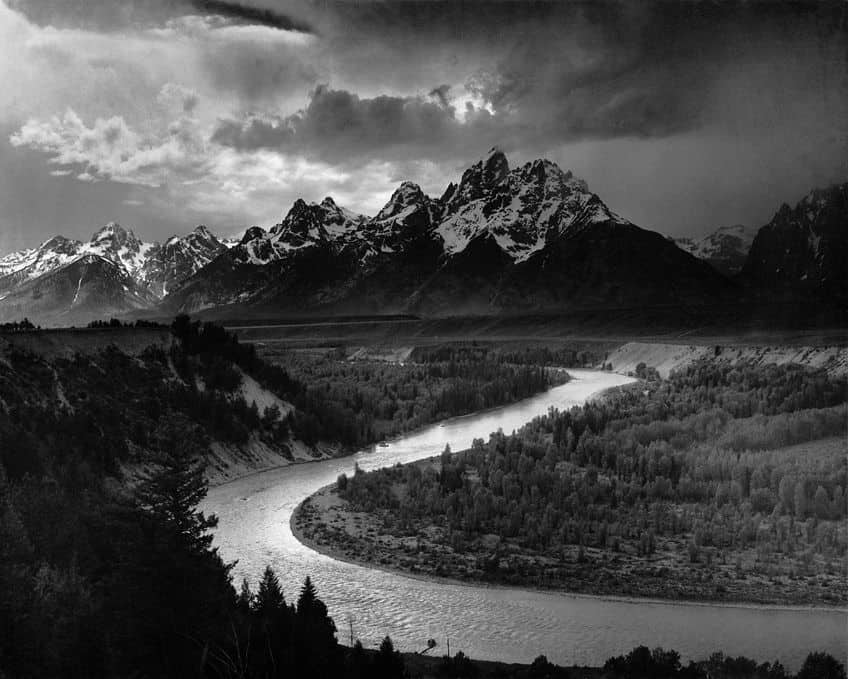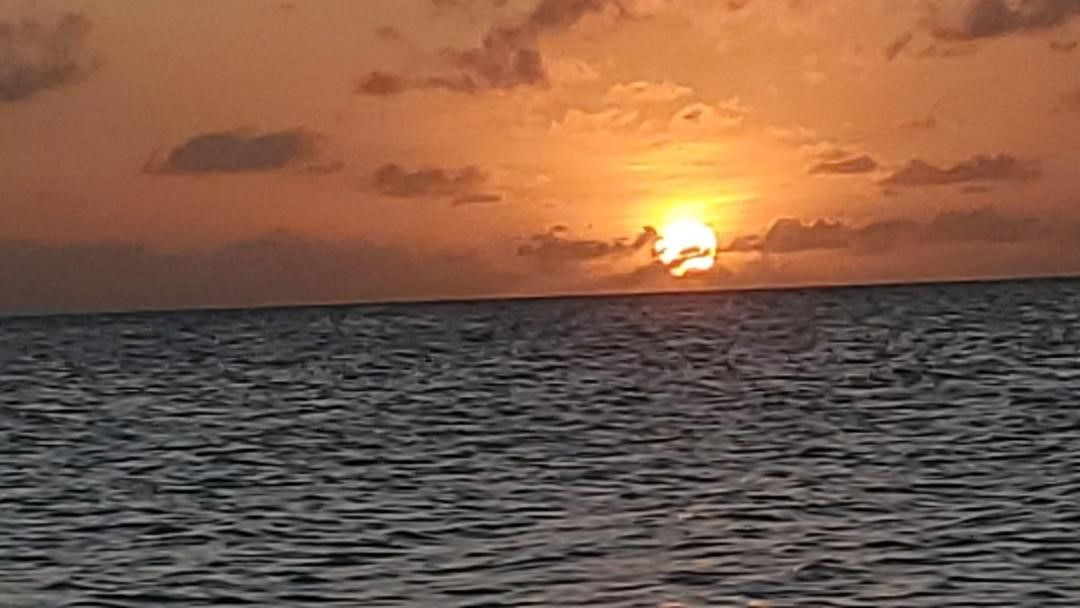Introduction
The connection between the creation of art and the source of inspiration is fascinating and intricate, as it delves into the thematic and formal elements that link the two works. In this essay, I will contemplate the relationship between my original photograph and Ansel Adams’ “The Tetons and the Snake River.” I aim to uncover the similarities and differences between the two pieces and explore how the medium impacts the viewer’s experience.
Source of Inspiration

“The Tetons and the Snake River” is a famous landscape photograph by Ansel Adams from 1942, capturing the stunning beauty of the Teton Range and the winding Snake River. Adams’ precise composition and use of light and shadow create a powerful sense of depth and grandeur in the image, showcasing his mastery of the medium (Lamouliatte, 2021).
Original Photograph

My original photograph, taken in October 2023, portrays a vibrant sunset over Eagle Beach in Aruba, with the Caribbean Sea stretching out in the distance. The warm, golden hues of the setting sun cast a breathtaking glow over the beach, creating a sense of tranquility and awe, capturing the fleeting beauty of the sunset and evoking a feeling of serenity and wonder.
Comparison
The beach is bathed in a mesmerizing radiance as the setting sun paints it with warm, golden tones. This spectacle induces a calm and reverent atmosphere, seizing the transient splendor of the sunset and arousing a sense of peace and amazement. The common thread between the two compositions resides in their mutual emphasis on the natural realm and its awe-inspiring magnificence, encouraging the observer to reflect on the grandeur of the natural world. In terms of formal elements, both photographs strongly emphasize composition and the use of light and shadow.
Adams’ photograph employs a strong sense of depth and scale, drawing the viewer’s eye into the vast expanse of the landscape. In contrast, my photograph uses the interplay of light and color to create a sense of warmth and intimacy, inviting the viewer to immerse themselves in the moment’s beauty. While both photographs are rooted in photography, they offer distinct visual experiences shaped by their formal elements and compositional choices.
The medium of photography significantly impacts how the viewer experiences the two pieces. Adams’ black and white photograph creates a timeless and iconic quality, emphasizing the enduring beauty of the natural landscape. The absence of color allows the viewer to focus on the play of light and shadow, as well as the intricate details of the scene. In contrast, my color photograph captures the vibrant and ephemeral nature of the sunset, immersing the viewer in the warmth and richness of the moment, enhancing the emotional impact of the photograph and evoking a sense of wonder and tranquility.
Conclusion
In summary, the interplay between my artistic creation and the source of inspiration is distinguished by a profound thematic and formal correlation, emphasizing the enduring allure of the natural world. Both compositions converge on the theme of nature’s transformative potency, yet they diverge in their visual narratives, shaped by the unique interplay of formal elements and the specific medium of photography. This introspective exploration has afforded me a heightened appreciation for the nuanced ways in which artistic endeavors can encapsulate and elicit the profound beauty inherent in the surrounding world. It underscores the ability of art not only to capture the essence of nature but also to act as a powerful conduit for conveying the multifaceted and timeless splendor that surrounds us.
Reference
Lamouliatte, H. (2021). The American Landscape: from an Ideological to an Ecological Object in Oxbow Archive by Joel Sternfeld. American Studies Journal, (1).